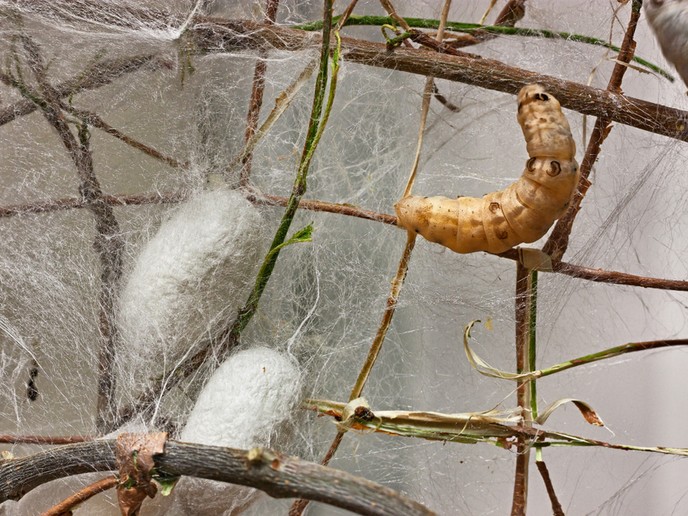Robot spiders spinning giant silk webs to catch space trash? What may sound like sci-fi fodder to some might actually ignite the imagination of others. Thanks to its exceptional strength, toughness and thermal stability, silk has attracted a lot of attention in recent years, providing inspiration to manufacture synthetic counterparts that mimic its biological structure and function.

Partially supported by the EU-funded FLIPT and SABIP projects, a team of scientists has shown that natural silks can withstand the cold, while some even get stronger the colder it gets. Their findings were published in the journal ‘Materials Chemistry Frontiers’. They investigated “the behavior and function of several animal silks by focusing on the multi-fibrillar fibres of Antheraea pernyi silkworm cooled down to –196 °C.”
A news release by project partner the University of Oxford summarises the findings. It notes that “the team was able to show not only ‘that’ but also ‘how’ silk increases its toughness under conditions where most materials would become very brittle.” It adds: “Indeed, silk seems to contradict the fundamental understanding of polymer science by not losing but gaining quality under really cold conditions by becoming both stronger and more stretchable.” The team found that silk’s toughness is based on its tiny fibres.
“It turns out that the underlying processes rely on the many nano-sized fibrils that make up the core of a silk fibre,” according to the same news release. In the journal article, the researchers state: “We propose that the highly aligned yet relatively independent nanofibrillar structure allows the partly frozen molecular chain at cryogenic temperature to be activated to induce crack blunting, to allow fibril slipping, and to facilitate the effective unfolding of silk fibroin molecular chains thus preventing or delaying brittle failure of the whole fibre.”
They conclude: “We envision that our study will lead to the design and fabrication of new families of tough structural composites using natural silk or silk-inspired filaments for testing applications even at arctic or indeed outer-space conditions.” The news release suggests that the wide range of applications that could build upon the findings of the study range from “new materials for use in Earth’s polar regions to novel composites for light-weight aeroplanes and kites flying in the strato- and meso-sphere to, perhaps, even giant webs spun by robot spiders to catch astro-junk in space.”
Inspired by nature
The two projects that provided funding for the study were both inspired by nature and focused on natural spider and worm silks to gain insights into biopolymer technology. Biopolymers are polymers produced by living organisms, and can be derived from microbial systems, extracted from plants or chemically synthesised from basic biological systems. Polymers refer to naturally occurring or synthetic compounds consisting of large molecules made up of a linked series of small basic units.
Biopolymers are used in medical materials, packaging, cosmetics, food additives, clothing fabrics, water treatment chemicals, industrial plastics, absorbents, biosensors and even data storage elements. The SABIP (Silks as Biomimetic Ideals for Polymers: SABIP) project ran between 2009 and 2014. FLIPT (FLow Induced Phase Transitions, A new low energy paradigm for polymer processing) is scheduled to end in 2019. FLIPT was set up to create a new range of bio-inspired polymers that can be processed with minimal energy input.
Source
CORDIS news, press release, 2019-11-26.
Supplier
Share
Renewable Carbon News – Daily Newsletter
Subscribe to our daily email newsletter – the world's leading newsletter on renewable materials and chemicals












